In this blog post, I’m going to share with you the core activities (making up a 4-5 week unit) I use with my own students when teaching The Odyssey to peak their interest, assess and bolster their knowledge, and prepare them for The Odyssey itself. Keep reading to learn all about The Odyssey Pre Reading Activities I use.
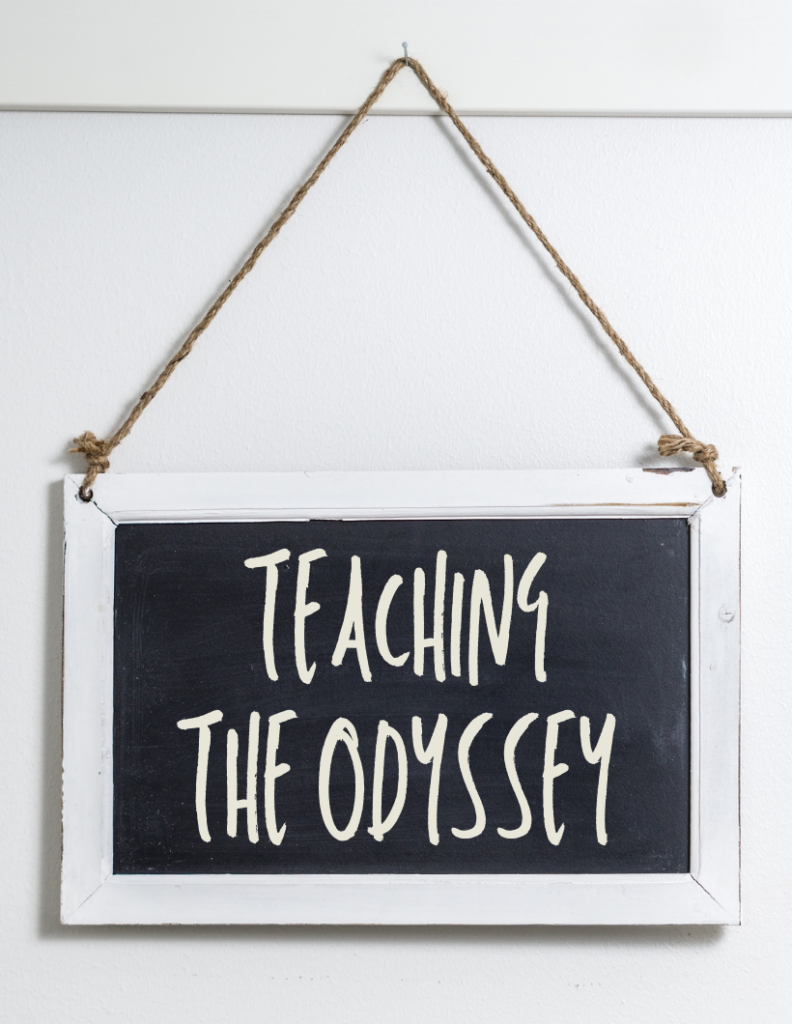
The Odyssey… the quintessential epic journey. Preparing for The Odyssey? An epic journey itself!
The only way I can make myself read The Odyssey is by revving up the Greek Mythology, asking essential questions, and talking about it with others. These are the same tactics I use with my students as well.
I don’t know anyone, other than an Ancient Greek historian or a literature PhD student who would think, “Let’s read this giant poem. It’ll be fun!” And I say this as an English major and English teacher. The text is… intimidating, and alien, and ancient.
Because this is arguably an important piece of literature, the task as teachers becomes finding the best methods and strategies for teaching The Odyssey. Like with any curriculum design or lesson planning, it is essential to think with the end in mind.
For me, the end goal is to help students see the pattern in The Odyssey, the hero’s journey, and to learn how to look at a character and text through different lenses. This becomes one of the key The Odyssey pre reading activities.
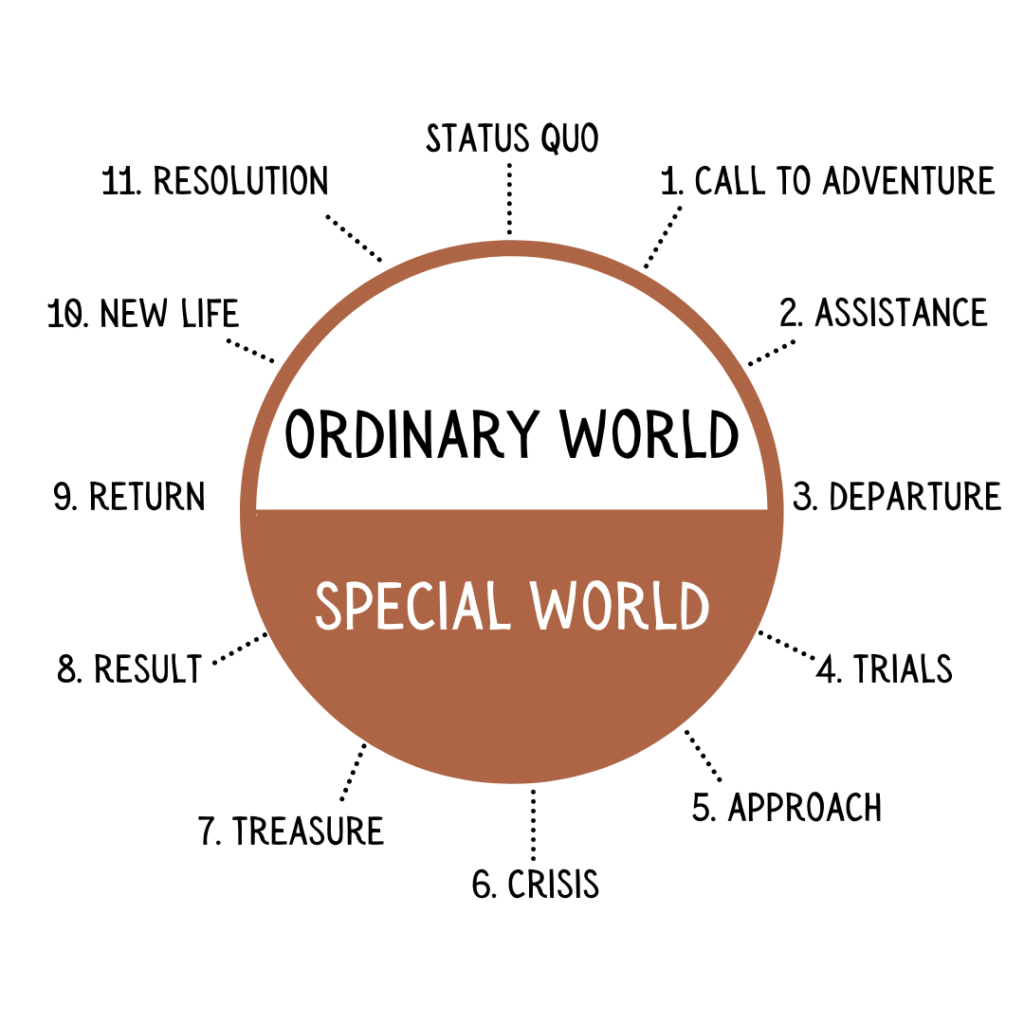
The hero’s journey pattern, or archetype, has inspired countless tales throughout time including our own–this concept is an essential idea because it is so prolific. The most notable? Star Wars.
The Odyssey is also one that brings up questions of interpretation. What makes someone a hero, in this ancient culture and today? Are heroes allowed to have flaws, if so, how far can they go? What do we leave out when we teach this story? What cultural values do we learn that mirror or contrast our own? There are many more ways to dive into the story and look at it from other angles, which is one of the most interesting things about it.
With all this in mind, how can you get students to buy into this exhaustive text? To dedicate themselves to actually reading it?
Well, it’s never a guarantee. But, I do believe there are strategies we can use and implement to hook students when teaching The Odyssey.
#1 Essential Question Quick Write(s)
I love quick writes. They are an easy and relatively painless (for teachers and students) vehicle to assess students’ thinking and to build up students’ writing tolerance, even if informally.
The key here is to narrow your scope or to space out the essential questions throughout the unit. If you’ve backward planned your unit, the whole semester, then you know your end goal, and you can already start pointing students’ thinking into that direction.
When considering The Odyssey, what is the scope of your focus? What theme(s) are you wanting students to consider? Then develop, or quite honestly find, questions geared toward those ends. These answers should also help you determine the focus of your The Odyssey pre reading activities.
These are a few essential questions I’ve used with The Odyssey:
- Why are we so drawn to the hero’s journey (the monomyth)?
- How do heroes reflect and influence their culture?
- How do cultural and religious beliefs impact stories?
- Why is it so important for cultures and societies to tell stories?
- What are the characteristics of a hero?
The key to essential questions: they should be open-ended, approachable (requiring little content knowledge, unless students have learned it with you), and engaging.
I tend to have quick writes more frequently (once a week) toward the beginning of the semester, that either build off each other or touch on different key concepts or ideas that we’re considering. Asking questions, even developing or choosing them, helps me as a teacher to focus my goals.
How do you do this?
I create a copy of this Doc for all students in Google Classroom, and then I have a “master” copy that I also attach and make visible. Each week, or whenever there’s a new question, I will add it to the master doc and ask students to copy & paste it onto their own. Then, they take 5-10 minutes to answer the question.
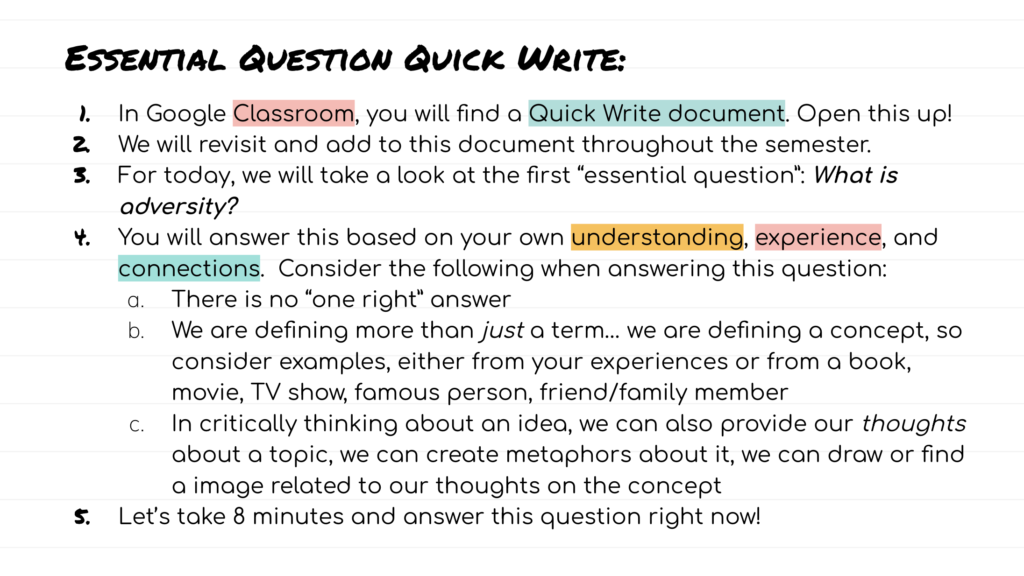
I review the Doc in class with students and typically have the directions on a Slide or on the website (see right –>). I want the quick write Doc to be “theirs,” so I try to just put the questions on it, and leave the rest up to them (i.e. no directions or teacher-lingo). These are the directions I’ve used this year.
The grading of these… sometimes I do, sometimes I don’t. Recently, I started moving toward not grading them and instead reading them and giving digital stickers (an idea I gleaned from Angela Watson’s 40 Hour Teacher Workweek Course).
#2 The Hero’s Journey
The main “thing” I want students to gain from reading The Odyssey is the concept of the hero’s journey. This is an essential idea we will continually come back to throughout the course, and it is honestly one of the concepts that applies outside the classroom.
There are a few ways to incorporate and approach the hero’s journey. Here’s what I do when preparing to read The Odyssey, or in other words here are the steps to this The Odyssey pre reading activity.
First, define the term.
I suggest the TED-Ed video “What makes a hero?” by Matthew Winkler. It’s short, easy to follow, and engaging. Students should of course take notes on the video. I like to follow this up with sharing what they took notes on, and then beginning to apply this concept, the stages of the hero’s journey, to something they know, like Finding Nemo or something of the sort. It is helpful if you know the movie too 🙂
I also suggest having students dig deeper into this concept with a reading. Here are a few I’ve found that I would or do use.
- Master Class – “Writing 101: What is the Hero’s Journey?”
- “The Stages of the Hero’s Journey,” and excerpt from Stuart Voytilla’s Myth and the Movies (you can research for excerpts yourself. For copyright reasons, I won’t share any excerpts here).
Second, apply the term.
Movie Poster
When students understand the basics of the term, I love asking them to work together to apply them. This does take minor planning.
Before you’re fully ready for students to dive in, get student help in brainstorming movies to which they can apply this concept. As a class, your students should brainstorm movies they are familiar with. Make sure you are keeping track of the movies the most students are familiar with, children’s movies are generally safe.
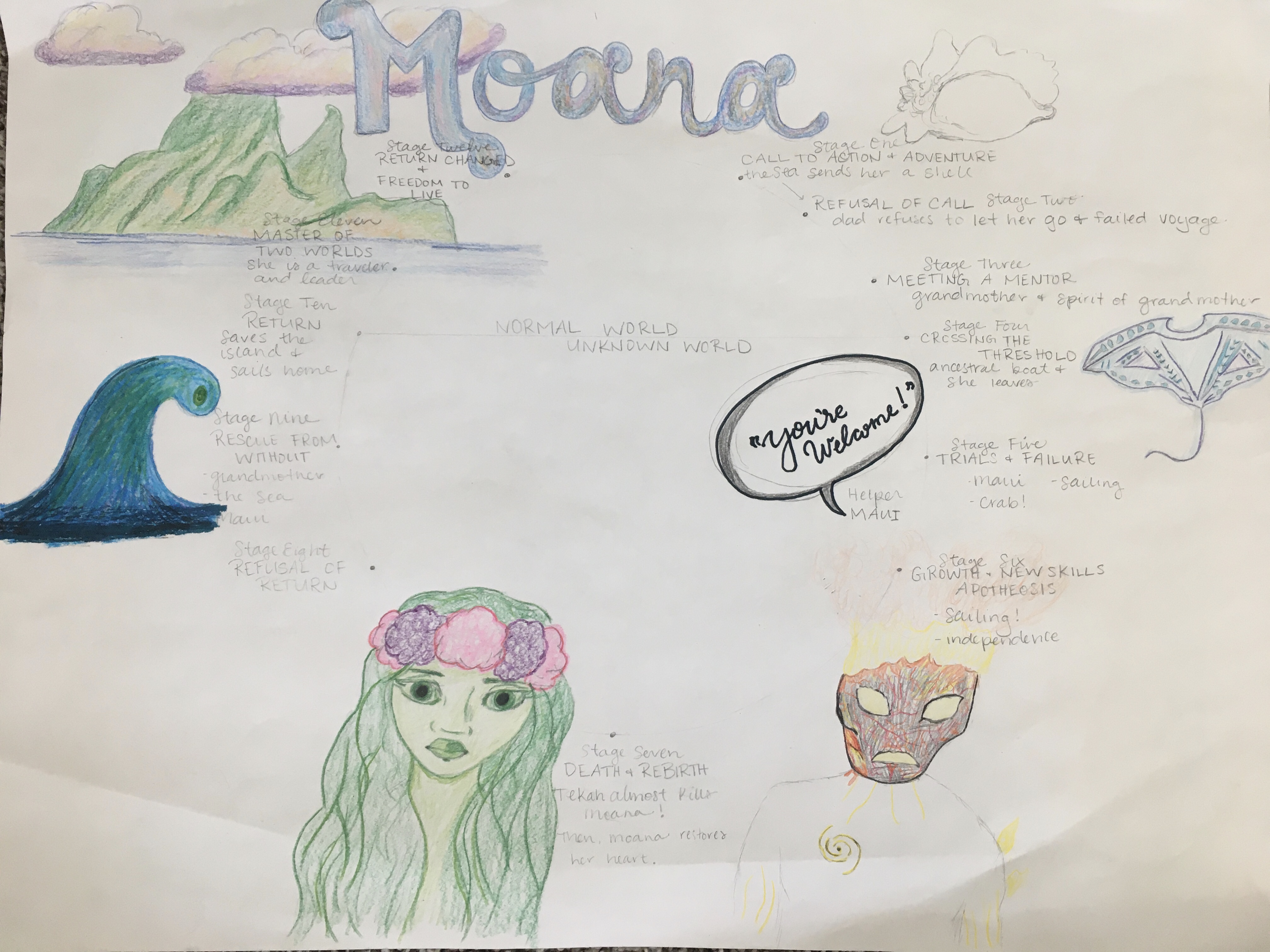
Then, for the next class I put students into groups of 3-4 if they aren’t already, and I have groups randomly draw a movie title out of a hat, or bucket, or bag–whatever you have! 🙂 They need to work together to plot out the 12 stages of the hero’s journey for their movie. Sometimes they need help, so walk around and check in with each group.
Before they can work on finalizing this on a poster, they need to send a spokesperson over to me and run through the stages. If they seem all set, I give them the go ahead. The group can then grab a poster and a craft box (or however you have students grab markers, colored pencils, etc.).
Generally, this takes a period for planning and another period to finish up the poster. Sometimes I have students present these, and other times I have them do a gallery walk. You can make the gallery walk interactive by giving each student a few sticky notes and they can write notes to a group based on their considerations of the group’s poster. This is probably a student favorite of all The Odyssey pre reading activities.
Mini-Essay
This past year, with distance learning and all, I did not do the movie poster because at my school teachers were told we could not use breakout groups due to monitoring issues. At this point, Google Meets was not on my radar, and thus, group-type projects became an obstacle I wasn’t prepared to solve at this point in the unit.
Problem-solving mode on, I realized I could also use this application of the hero’s journey to assess students’ writing skills. Double duty!
I worked with my grade-level team to develop a mini-essay (400-600 words, or 2ish pages double spaced) prompt.
Essentially, we asked students to use the TED-Ed video by Matthew Winkler to help them define the hero’s journey concept, and then they pulled in a movie or book of their choice to discuss why are we (as humans, or as a society) so drawn to the hero’s journey?
Because this was an assessment of their writing ability, this essay writing process went quicker than a fully fledged essay (1-2 weeks as opposed to 2-3 weeks). Nonetheless, students need support, so I did teach how to write a thesis, and I gave basic feedback on selected aspects of writing as they planned and drafted.
#3 Greek Mythology Research
The Odyssey, obviously, relies on Greek mythology. While I do think Greek Mythology has resurfaced in pop culture in the last decade, in no small part due to Rick Riordan and his various series, I think students need to learn about the less popular Greek gods and goddesses that were fundamental to the Greeks.
There are many activities out there for studying Greek mythology prior to reading The Odyssey, so do your research and find what works best for your students!
Because I know students need the skill of giving speeches, some most years I have students write and give a speech. You can go the typical informational speech route.
Or, you can have students get a little more creative. They become the Greek god or goddess they have researched, and they give a speech as if they are that Greek god or goddess!
My colleague and mentor developed a “Festival of the Greeks” and invited parents and family members to attend when their student was giving the speech. Students are encouraged to go all out. Make their outfits, dress up, bring props. A few years ago, a parent even offered to build miniature Greek-styled pillars! We put them next to the podium where students presented. It was awesome.
Do what you think is feasible, and be aware that some students won’t dress up or get too into it. And that’s ok. If they do the research, that’s a victory. If they write the the speech, that’s a W. If they… you get the idea. Whatever they give you, celebrate that and then work on how to get more from them later on. 🙂
This past year, again due to distance learning, the same colleague and I brainstormed new ideas that could translate to online learning. Rather than do the same thing, we decided they would research the Big 12 gods and goddesses and create Google Slides.
Then, to bring in the creative and presentation element, my colleague had the genius idea to have students create their own god or goddess! They developed the name, powers, domans, etc. for their very own god, goddess, or even monster! Students plotted, drafted, and then recorded their “story.”
I suggest making your own and then sharing it with students, so they have a model and an idea of what you want. If you’re teaching in-person, you can have live or recorded presentations, but either way, modeling is key.
Did I make one? Yes, I sure did… You can check out my rough script here.
In addition to anything you have students do to learn about Greek mythology, I suggest providing resources with basic info on the Big 12 Greek gods and goddesses, so if they forget or missed something, they can look back at the important characteristics you’ve highlighted for them. The Odyssey pre reading activities don’t have to be boring or basic, as this one proves!
#4 Culture & Context Research
Outside of the Greek mythology, there are important cultural and contextual aspect for students to know, so The Odyssey and Odysseus make more sense.
What do they need to know? Well, honestly, this depends on what you want them to get out of The Odyssey, overall. But in general, I suggest students understand the following:
- What was happening before this story, which ultimately created this story?
- The Trojan War — it actually made Odysseus famous and started his legendary status as a leader!
- Where does this story take place?
- Greece, and prior to that Troy.
- You can have students research Odysseus’ path, or at least look at Greece on a map. The fact that there are many islands and Odysseus needs to island-hop his way home is significant. I mean, the god of the sea hated him… that’s important!
- I also think it’s interesting for them to consider, yes, we consider this a fictional story, but… did Troy exist?
- Historically, what was significant about this time period that is different than today?
- The Bronze Age — metal was relatively new to the world, and learning this blows students’ minds!
- How does the structure and tradition of The Odyssey impact the story? What is the history of telling The Odyssey?
- Another interesting idea for students to grapple with: the Greeks didn’t write this story down. They told it in pieces through their oral tradition and rhapsodes.
- What cultural norms guide Odysseus and The Odyssey?
- Xenia, the custom of welcoming strangers is huge in the story. It’s kept and broken in several ways! Knowing this idea ahead of time helps students understand something that they wouldn’t get otherwise.
- Today, we do not have this concept… so it seems “unrealistic” to them if they don’t get why someone would welcome a stranger into their home and treat them like a god.
If you want a ready-made activity that helps students dive into these topics, check out my Teachers Pay Teachers store for the “The Odyssey: Culture & Context” Stations Activity. If nothing else, I use these multifaceted culture and context stations as my go to The Odyssey pre reading activities.
If you want a less intensive, but still informative activity, I’ve made a podcast series all about The Odyssey. Episode 1 helps students learn key background information. Check it out here, and check out the transcripts and comprehension questions here.
#5 Anticipation Guide
Do these have another name? I feel like this is a really “teacher-y” title, but I haven’t thought of a better one 😂. These are the handouts with lists of statements that students read and either Agree or Disagree with. Students then add in reasons and explanations for why they agree or disagree. Typically, I use them a little before we read a key text.
These are always a hit in my classes because… teenagers love to argue. Beyond just reading, dis/agreeing with the statements and reasoning why, I also host whole class discussions. Students move to one side of the room, or one corner, or the other based on their answer. For example, the side of the classroom with the window = Agree; the side of the classroom with the door = Disagree.
From their “sides,” students first talk with people next to them, those who agree with them. Then, I take volunteers or choose students to “share out” their thinking to the other side. It is a pseudo-debate of sorts.
You will get students who always want to share, and others who want to hide when it comes time to share “across the table,” as the saying goes. You can do this in groups, rather than the whole class. These are just ideas. I highly suggest finding a way to make students move around the room. Anticipation guides are great The Odyssey pre reading activities.
Want to see an example of an anticipation guide? Check this out.
Want your own copy? Click here. If you want even more freebies, sign up for my monthly newsletter : )
These are the ways I prep my students when I’m teaching The Odyssey. What about you? If you have ideas please share. If you’d like to hear about the activities and plans I use while reading The Odyssey, leave me a comment and check out this blog post.
Happy teaching!
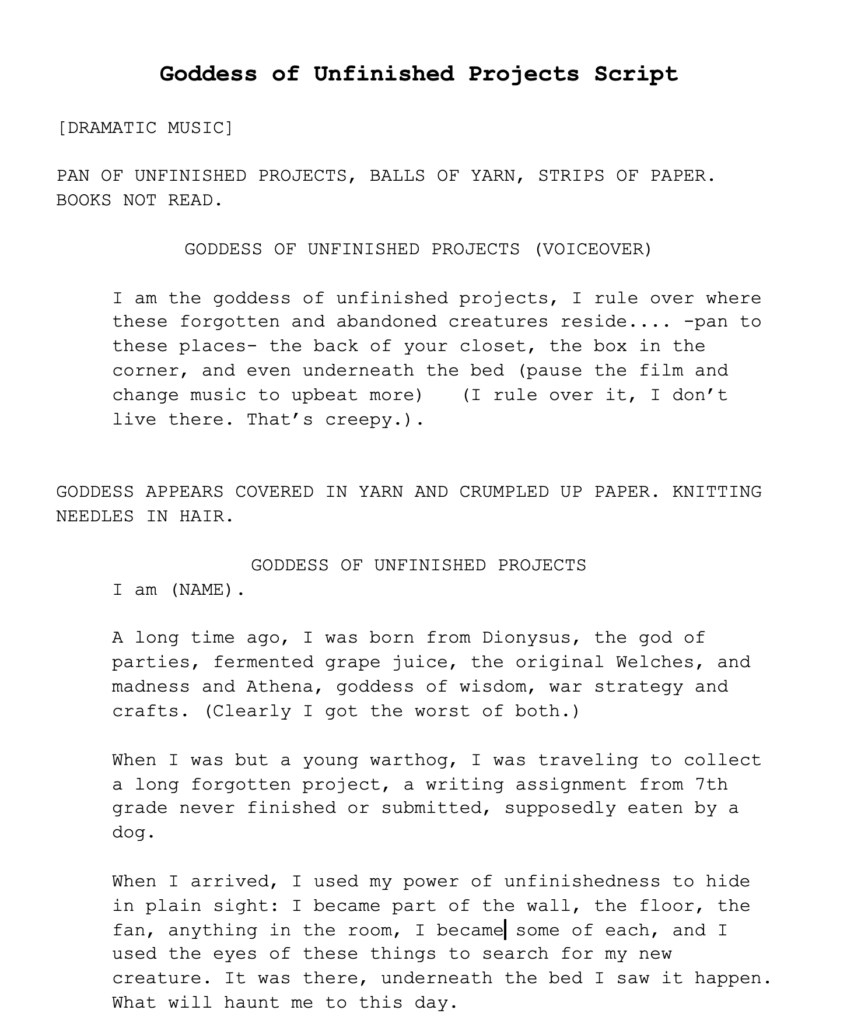

 5 Engaging Lesson Plans: Convergence of Self and Place in Jamaica Kincaid’s “Girl”
5 Engaging Lesson Plans: Convergence of Self and Place in Jamaica Kincaid’s “Girl”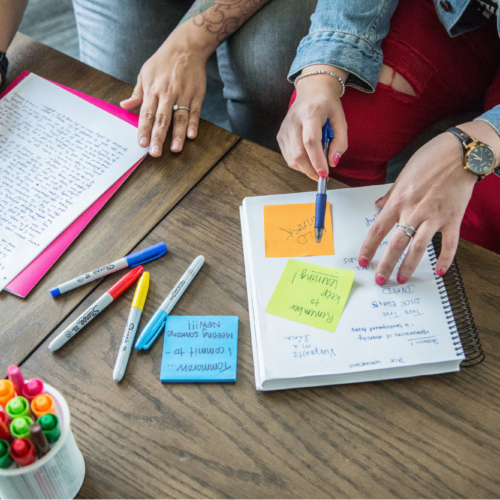 Student Writing Conferences: A Guide
Student Writing Conferences: A Guide Song Battle Project: Teaching Songs with Rhetorical Analysis
Song Battle Project: Teaching Songs with Rhetorical Analysis